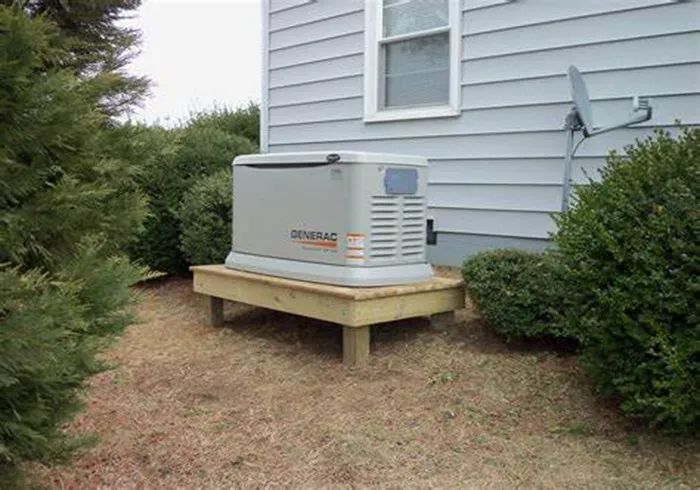Power outages can happen at any time, leaving you without electricity for hours or even days. A home generator can provide peace of mind by keeping your lights on and your appliances running. But how do you know what size generator you need? This guide will walk you through everything you need to know to choose the right generator for your home.
Why Generator Size Matters
Choosing the right size generator is crucial. If your generator is too small, it won’t power all your essential appliances. If it’s too large, you’ll waste money on fuel and upfront costs. The key is to find a generator that matches your home’s power needs.
Understanding Watts: The Basics
Generators are rated in watts, which measure electrical power. To determine the right size generator, you’ll need to calculate the total wattage of the appliances and devices you want to power.
There are two types of wattage to consider:
Running Watts: The continuous power needed to keep an appliance running.
Starting Watts: The extra power required to start an appliance with a motor, like a refrigerator or air conditioner.
Step 1: Make a List of Essential Appliances
Start by listing the appliances and devices you want to power during an outage.
Focus on essentials like:
- Refrigerator
- Freezer
- Lights
- Heating or cooling system
- Sump pump
- Well pump
- Microwave
- Television
- Internet router
Step 2: Calculate the Total Wattage
Next, find the running and starting watts for each appliance. You can usually find this information on the appliance’s label or in the owner’s manual. Add up the running watts for all the appliances you want to power simultaneously. Then, identify the appliance with the highest starting watts and add that to your total.
For example:
Refrigerator: 700 running watts, 2,200 starting watts
Lights: 100 running watts
Microwave: 1,000 running watts
Total running watts: 1,800
Total starting watts: 2,200
Total wattage needed: 1,800 + 2,200 = 4,000 watts
Step 3: Choose the Right Generator Size
Once you know your total wattage, you can select a generator that meets your needs.
Here’s a general guide:
Small Generators (1,000–3,000 watts): Ideal for powering a few essential appliances, like lights, a refrigerator, and a microwave.
Medium Generators (3,000–5,000 watts): Can power most essential appliances and a few additional devices, like a TV or computer.
Large Generators (5,000–10,000 watts): Suitable for powering an entire home, including central air conditioning and heating systems.
Whole-House Generators (10,000+ watts): Designed to power everything in your home, often with automatic startup during an outage.
Types of Generators
There are three main types of generators to consider:
Portable Generators: These are affordable and versatile but require manual setup and fueling. They’re ideal for powering a few appliances during short outages.
Inverter Generators: These are quieter and more fuel-efficient than portable generators. They’re great for powering sensitive electronics like laptops and smartphones.
Standby Generators: These are permanently installed and automatically turn on during an outage. They’re the best option for whole-house power but come with a higher price tag.
Fuel Types: Pros and Cons
Generators run on different types of fuel, each with its own advantages and disadvantages:
Gasoline: Widely available but has a short shelf life and can be dangerous to store.
Propane: Clean-burning and stores well, but may require large tanks.
Diesel: Efficient and durable, but noisy and expensive.
Natural Gas: Convenient for standby generators but requires a gas line.
Safety Tips for Using a Generator
Using a generator safely is critical to avoid accidents or damage to your appliances.
Follow these tips:
- Always operate your generator outdoors, away from windows and doors, to prevent carbon monoxide poisoning.
- Use heavy-duty extension cords rated for outdoor use.
- Never plug a generator directly into your home’s electrical system without a transfer switch.
- Turn off the generator and let it cool before refueling.
Maintenance Tips for Your Generator
To ensure your generator is ready when you need it, perform regular maintenance:
- Check the oil and fuel levels before each use.
- Run the generator for a few minutes every month to keep it in good working condition.
- Replace the air filter and spark plug as recommended by the manufacturer.
- Store fuel in a safe, approved container and rotate it regularly.
Cost Considerations
The cost of a generator depends on its size, type, and features.
Here’s a rough estimate:
Portable generators: 3001,500
Inverter generators: 5002,000
Standby generators: 2,00010,000+
Don’t forget to factor in installation costs for standby generators and the ongoing cost of fuel.
Environmental Impact
Generators can have an environmental impact due to emissions and fuel consumption.
To minimize this:
- Choose a fuel-efficient generator.
- Opt for cleaner fuels like propane or natural gas.
- Use your generator only when necessary.
Conclusion
Choosing the right size generator for your home doesn’t have to be complicated. By calculating your power needs, understanding the different types of generators, and following safety guidelines, you can ensure your home stays powered during an outage. Whether you opt for a portable generator or a whole-house standby system, investing in a generator is a smart way to protect your family and your home.

